Prairie Heart: the Passion of Laura Ingalls Wilder
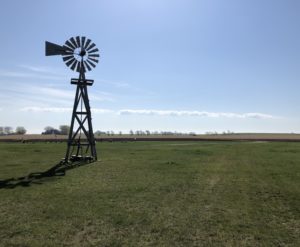
“But there was something else here that was not anywhere else. It was an enormous stillness that made you feel still. And when you were still, you could feel great stillness coming closer.” This is the description Laura Ingalls Wilder gives as her family crosses Dakota Territory, driving toward Silver Lake in De Smet, South Dakota. Despite Ma and Pa’s conversation, Laura reveals, “[A]ll their talking did not mean anything to the enormous silence of that prairie.”
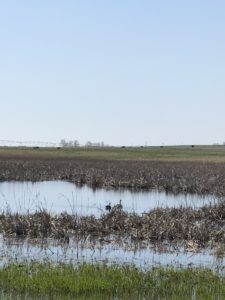 The first chapters of By the Shores of Silver Lake are some of my favorites because of the descriptions. Wilder captures the force of the prairie as few authors can. Although the family had traveled to Independence, KS; Pepin, WI; Walnut Grove, MN; and Burr Oak, IA, before coming to De Smet, Wilder recognizes a difference immediately. It was the difference, I believe, that stayed with her a lifetime. She found the wide-open spaces thrilling, and though Mary and Caroline were afraid and wanted to go back to Plum Creek, she writes, “[Laura] did not want ever to go back.” Wilder would eventually live out her days at Rocky Ridge, in the Ozarks of Missouri, but a piece of her heart would always remain on the prairie.
The first chapters of By the Shores of Silver Lake are some of my favorites because of the descriptions. Wilder captures the force of the prairie as few authors can. Although the family had traveled to Independence, KS; Pepin, WI; Walnut Grove, MN; and Burr Oak, IA, before coming to De Smet, Wilder recognizes a difference immediately. It was the difference, I believe, that stayed with her a lifetime. She found the wide-open spaces thrilling, and though Mary and Caroline were afraid and wanted to go back to Plum Creek, she writes, “[Laura] did not want ever to go back.” Wilder would eventually live out her days at Rocky Ridge, in the Ozarks of Missouri, but a piece of her heart would always remain on the prairie.
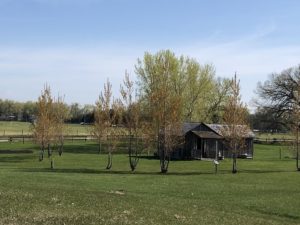 Wilder fans can tour the original Ingalls homestead just outside of De Smet. The house is a replica, built to the specifications of Charles Ingalls’ claim. It gives visitors a good idea of what it felt like to be a pioneer, living on the prairie in the late 1800s. A large corner of the land is a slough (pronounced slew). A slough is marsh-like land that cannot be farmed, at least not well. Charles chose the land because it was close to town, and he thought it would be good for hay, cattle, and a small crop. The cottonwoods that Charles planted are still on the homestead, and if you are lucky enough to go to the gift shop in town, the guide will tie a lovely cottonwood branch from the homestead to the ribbon of your package.
Wilder fans can tour the original Ingalls homestead just outside of De Smet. The house is a replica, built to the specifications of Charles Ingalls’ claim. It gives visitors a good idea of what it felt like to be a pioneer, living on the prairie in the late 1800s. A large corner of the land is a slough (pronounced slew). A slough is marsh-like land that cannot be farmed, at least not well. Charles chose the land because it was close to town, and he thought it would be good for hay, cattle, and a small crop. The cottonwoods that Charles planted are still on the homestead, and if you are lucky enough to go to the gift shop in town, the guide will tie a lovely cottonwood branch from the homestead to the ribbon of your package.
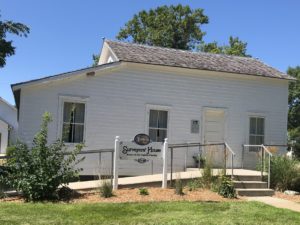
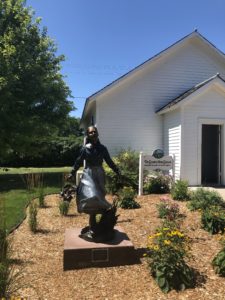 Visitors can also see the Surveyors’ House, which is where Laura and her family lived when they first came to De Smet. The house and the school have been moved to town from their original locations near Silver Lake. Inside the school is a picture of the snow storm of 1880-81, depicted in The Long Winter. Several blizzards hit the town that winter, and the last train made it through on January 4, 1881. By the end of that same month, the town was starving to death—until Almanzo Wilder, Laura’s future husband, and his friend Cap Garland volunteered to travel twelve miles to buy wheat from a farmer.
Visitors can also see the Surveyors’ House, which is where Laura and her family lived when they first came to De Smet. The house and the school have been moved to town from their original locations near Silver Lake. Inside the school is a picture of the snow storm of 1880-81, depicted in The Long Winter. Several blizzards hit the town that winter, and the last train made it through on January 4, 1881. By the end of that same month, the town was starving to death—until Almanzo Wilder, Laura’s future husband, and his friend Cap Garland volunteered to travel twelve miles to buy wheat from a farmer.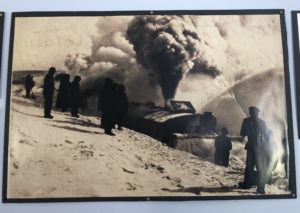
 The house that Pa built in De Smet is at its original location. Laura was married by the time the house was built and never lived here. It’s a mansion compared to the places they lived when she was growing up. The last (and only) time she returned home was when her father passed away. Caroline and Mary would live out the rest of their days in De Smet, Caroline doing laundry and housing renters to pay the bills. Grace lived in nearby Manchester, SD, and Carrie across the state in Keystone, SD.
The house that Pa built in De Smet is at its original location. Laura was married by the time the house was built and never lived here. It’s a mansion compared to the places they lived when she was growing up. The last (and only) time she returned home was when her father passed away. Caroline and Mary would live out the rest of their days in De Smet, Caroline doing laundry and housing renters to pay the bills. Grace lived in nearby Manchester, SD, and Carrie across the state in Keystone, SD.
 Rediscovering the books as an adult, I better understand the hardships of pioneer life—of Laura’s life. The land was difficult to farm, and pioneers made it worse. Without knowing it, they changed the “climate, the ecology, and the land itself,” adding to the harsh conditions they endured (Fraser). Caroline Fraser, author of Prairie Fires, states every “wheat seed sowed contributed to desiccation.” Combined with bad weather, grasshoppers, and mosquitoes, hardship seems too soft of a word.
Rediscovering the books as an adult, I better understand the hardships of pioneer life—of Laura’s life. The land was difficult to farm, and pioneers made it worse. Without knowing it, they changed the “climate, the ecology, and the land itself,” adding to the harsh conditions they endured (Fraser). Caroline Fraser, author of Prairie Fires, states every “wheat seed sowed contributed to desiccation.” Combined with bad weather, grasshoppers, and mosquitoes, hardship seems too soft of a word.
That doesn’t mean their lives were miserable. Quite the opposite. Wilder’s stories depict the kind of peace and simplicity any modern reader has to appreciate, if not desire at times. But to ignore the brutality of pioneer life on the Great Plains is to disregard the strength of the Ingalls family and the perseverance of Wilder herself, who despite poverty, constant uprooting, a brief education, a devastating fire, and a disabled husband still published one of the most renowned series of all time at the age of sixty-five.
So when you think of Laura Ingalls Wilder, go ahead and think of the bonnets, the baking, the prairie breezes. But don’t forget the imagination, the courage, and the spirit of the woman who dared to share the story of her love for the great, wild wilderness.

Very insightful blog with well chosen
Beautiful words showing a deep understanding of the prairie
Exceptional!
Thanks, Janet! So glad you enjoyed it.
Well-written! 🙂
Thank you, Kathy! And thanks for stopping by my blog.
Hi Mary, hope you enjoyed 221 Bakers Street this spring and glad to see your enjoying your summer. My husband and I have a lake lot at DeSmet. Lots of great tourist attractions there.
Can’t wait for new book and mystery series.
Hope to win mug.
Good to hear from you.
Linda
Thanks, Linda! You’re entered to win.